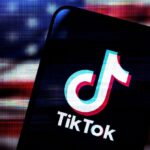In January 2021, the financial world was rocked by a seemingly inexplicable surge in GameStop’s stock price. What began as a struggle between retail investors and hedge funds morphed into a phenomenon dubbed the "short squeeze." As we move further into 2023, the landscape surrounding GameStop reveals the emergence of a trend that many are calling "Short Squeeze 2.0." This article delves into the nuances of GameStop’s stock dynamics and what this new chapter means for investors and the market as a whole.
Understanding the Basics of Short Selling
To grasp the concept of a short squeeze, one must first understand short selling. Short selling occurs when investors borrow shares of a stock and sell them at the current market price, hoping to buy them back at a lower price later to return to the lender, thereby profiting from the difference. However, if the stock price rises instead of falling, short sellers may face mounting losses. This scenario can trigger a "short squeeze," where short sellers are forced to buy back shares to cover their positions, further driving up the stock price.
GameStop: The Catalyst for a New Movement
In early 2021, a group of retail investors on platforms like Reddit’s WallStreetBets observed that GameStop (GME) had one of the highest short interest ratios in the market. Armed with this knowledge and a belief in the company’s potential (despite its struggles), they began purchasing shares and call options en masse. The resulting frenzy sent the stock price soaring from around $20 to an all-time high of $483 within a matter of weeks.
This explosive rise captured media attention and highlighted the growing influence of retail investors in the stock market, often pitted against institutional players. The GameStop saga served as both a cautionary tale and a rallying cry for a new era of democratized trading.
Enter Short Squeeze 2.0
As GameStop’s stock remained volatile following the initial short squeeze, a new wave of investor interest has emerged. Dubbed "Short Squeeze 2.0," this phenomenon is characterized by increasingly sophisticated trading strategies and the convergence of retail and institutional investor interests.
Factors Driving Short Squeeze 2.0
-
Increased Attention on Retail Trading: After the events of 2021, retail trading gained legitimacy, with many investing platforms enhancing their features to accommodate a more engaged audience. The accessibility of trading information and tools has empowered retail investors to act collectively, making them a formidable force.
-
The Rise of Social Media Investing: Platforms like Reddit, Twitter, and TikTok have become hubs for investor discussions, with retail investors sharing research, analysis, and trade ideas. This grassroots approach enables rapid dissemination of knowledge and trading signals, leading to coordinated buying efforts.
-
Tactical Trading: Investors have become more sophisticated by employing various strategies, such as options trading, to amplify their impact on stock dynamics. The use of call options enables investors to control larger positions than they could outright purchase, adding an extra layer of complexity to trading behavior.
-
Persistent Short Interest: GameStop continues to have a significant level of short interest, indicating that many investors believe the stock is overvalued. This continued pressure lays the groundwork for another potential squeeze should investor sentiment shift rapidly.
- Volatility and Market Conditions: The broader economic landscape, characterized by inflation concerns and fluctuating interest rates, can create heightened volatility in the stock market. When combined with the factors mentioned above, this volatility enhances the potential for short squeezes as nervous short sellers may choose to cut losses.
Implications for Investors
As investors navigate the landscape of Short Squeeze 2.0, several implications arise:
-
Increased Volatility: The combination of retail enthusiasm and hedging strategies by larger funds can contribute to extreme price fluctuations. Investors should prepare for rapid changes in stock value, which might not always align with traditional valuation metrics.
-
Heightened Market Awareness: The power of collective action is becoming a hallmark of retail investing. Individuals should therefore be aware of the potential effects their trades have on stock prices and consider the broader implications of their actions.
- Risk Assessment: While the lure of participating in a short squeeze can be enticing, investors must thoroughly assess their risk tolerance. The inherent unpredictability of these situations can lead to significant financial losses alongside potential gains.
Conclusion
The emergence of Short Squeeze 2.0 marks a notable shift in the dynamics of stock trading, particularly as it relates to GameStop. As retail investors continue to reshape the market landscape, the lessons learned from prior short squeezes will undoubtedly inform future strategies. Whether you are a seasoned investor or a newcomer to the stock market, understanding these dynamics is essential for navigating the exciting, albeit unpredictable, world of modern trading. GameStop may have been the flashpoint, but the ongoing saga reflects a larger movement signaling that the era of retail investors is far from over. The stock market will likely never be the same again.









